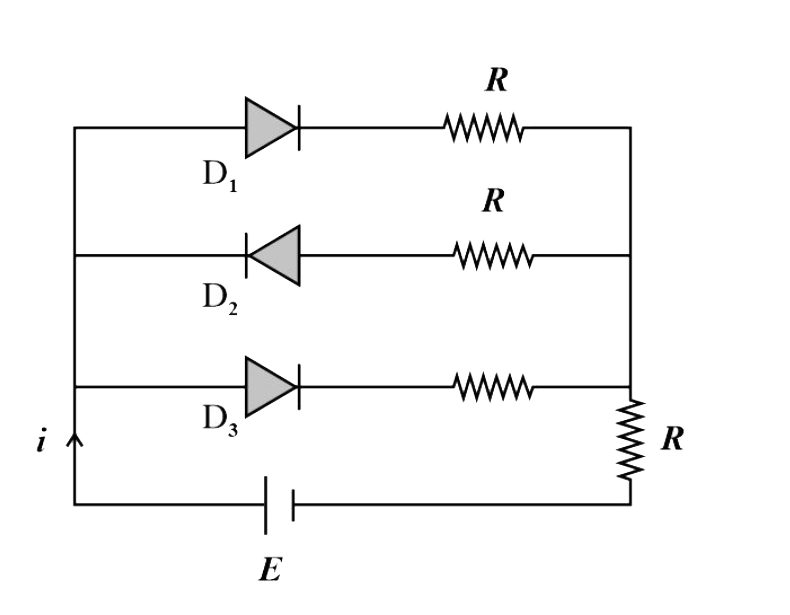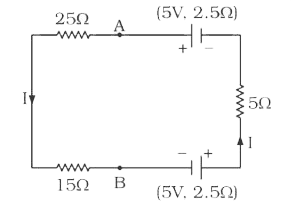In the following circuits, PN - junction diodes D1,D2andD3 are ideal for the following potential of A and B, the correct increasing order of resistance between A and B will be
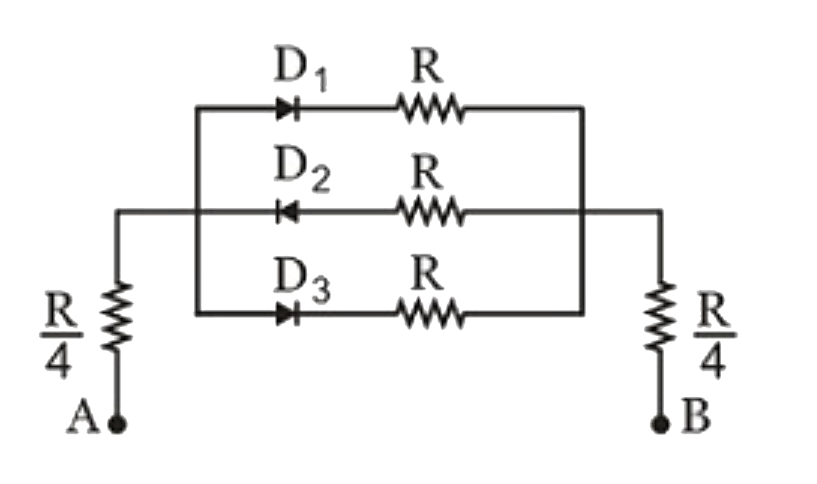
(i) −10V,−5V
(ii) −5V,−10V
(iii) −4V,−12V
A
(i)<(ii)<(iii)
B
(iii)<(ii)<(i)
C
(ii)=(iii)<(i)
D
(i)=(iii)<(ii)
Video Solution
Text Solution
The correct Answer is:C
(i) VAB=−10−(−5)=−5V
D2→ON(FB),D1,D3→(RB)(OFF)
RAB=R+R4+R4=3R2
(ii) VAB=−5−(−10)=+5
D1,D3→FB(ON),D2→RB(OFF)
RAB=R4+R2+R4=R
(iii) VAB=−4−(−12)=8V
RAB=R
|
Similar Questions
Knowledge Check
In the following circuit of PN junction diodes D1,D2 and D3 are ideal then i is
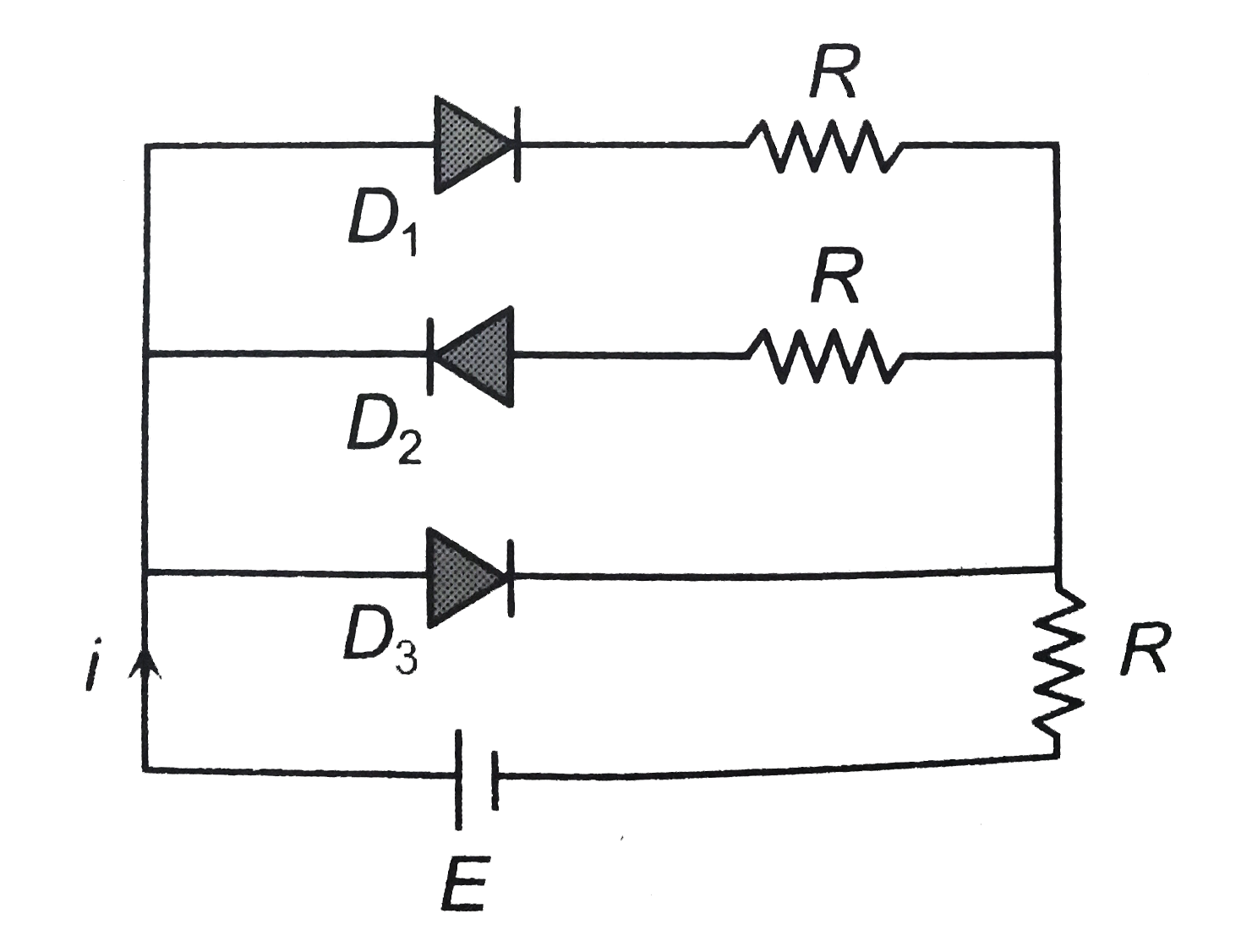 AE/RBE/2RC2E/3RDZero
AE/RBE/2RC2E/3RDZero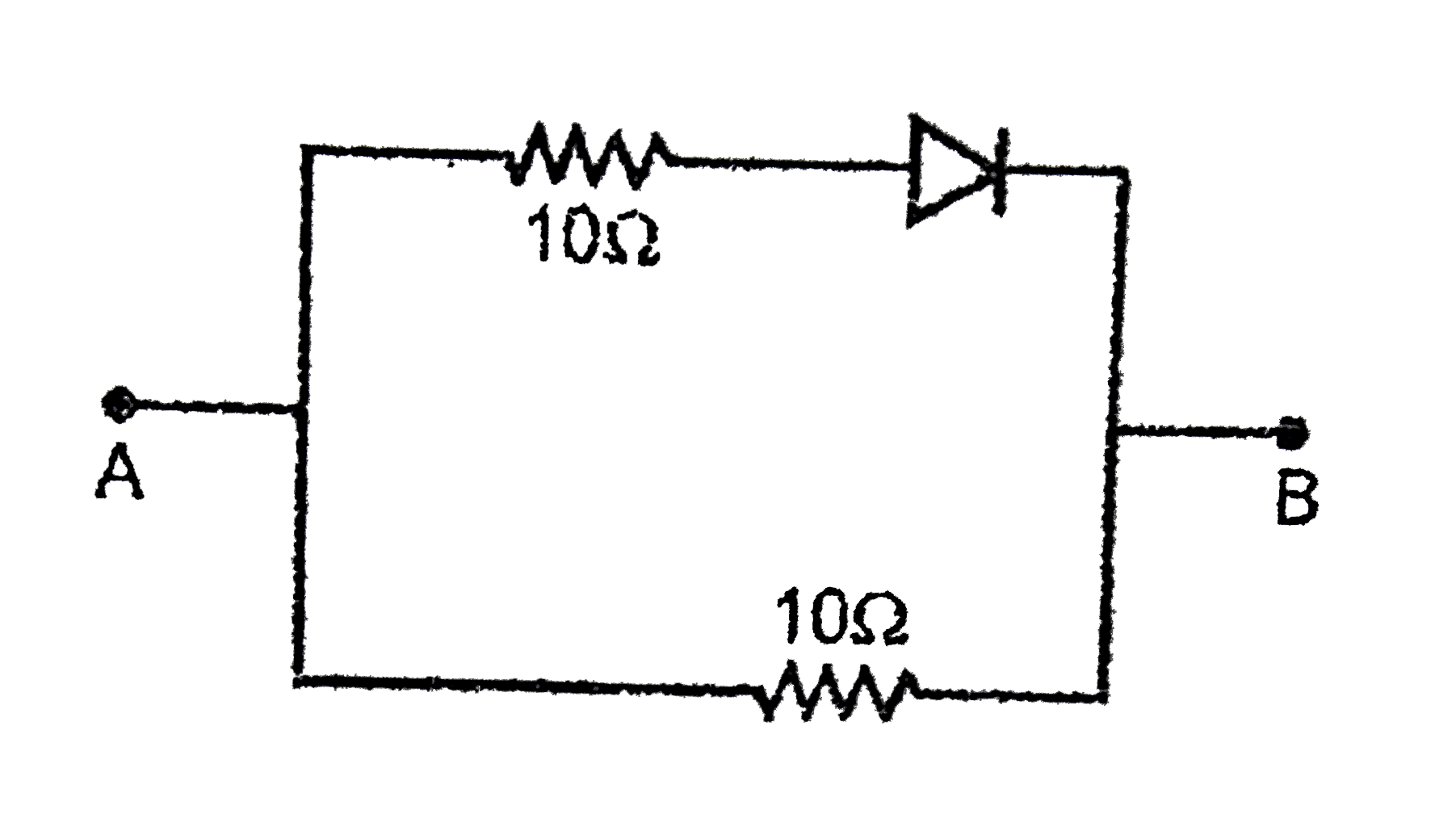
If VA and VB denote the potentials of A and B, then the equivalent resistance between A and B in the adjoint electric circuit isA10 ohm if VA>VBB5 ohm if VA<VBC5 ohm if VA>VBD20 ohm if VA>VBVA and VB denote potential of A and B, then the equivalent resistance between A and B in the adjoining circuit is (ideal diode).
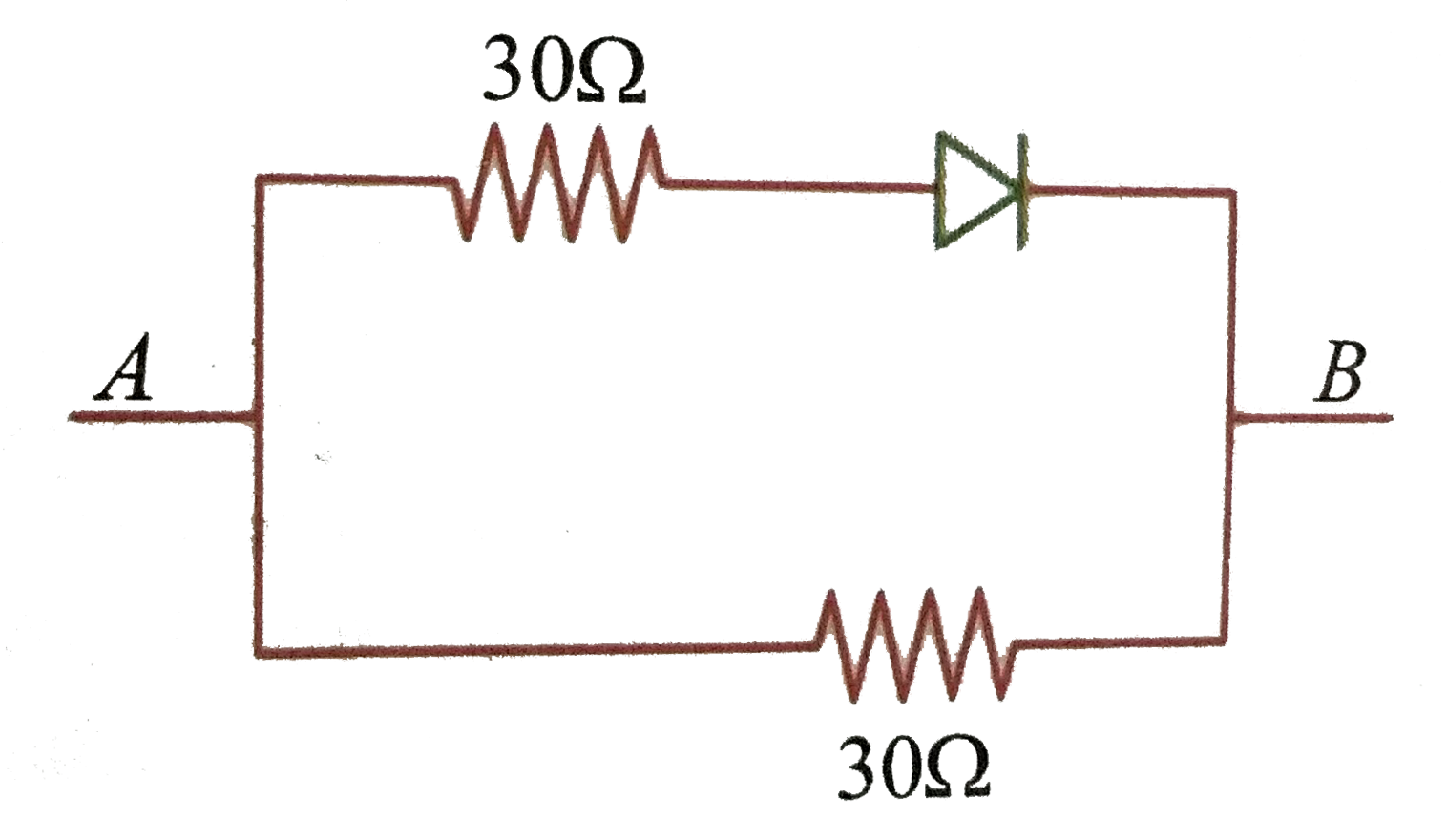 .A15ΩifVA>VBB30ΩifVA<VBCboth 1 and 2Dneither 1 nor 2
.A15ΩifVA>VBB30ΩifVA<VBCboth 1 and 2Dneither 1 nor 2
In the circuit shown, the potential differences, V1 ( between A and B ) and V2 ( between C and D ), are
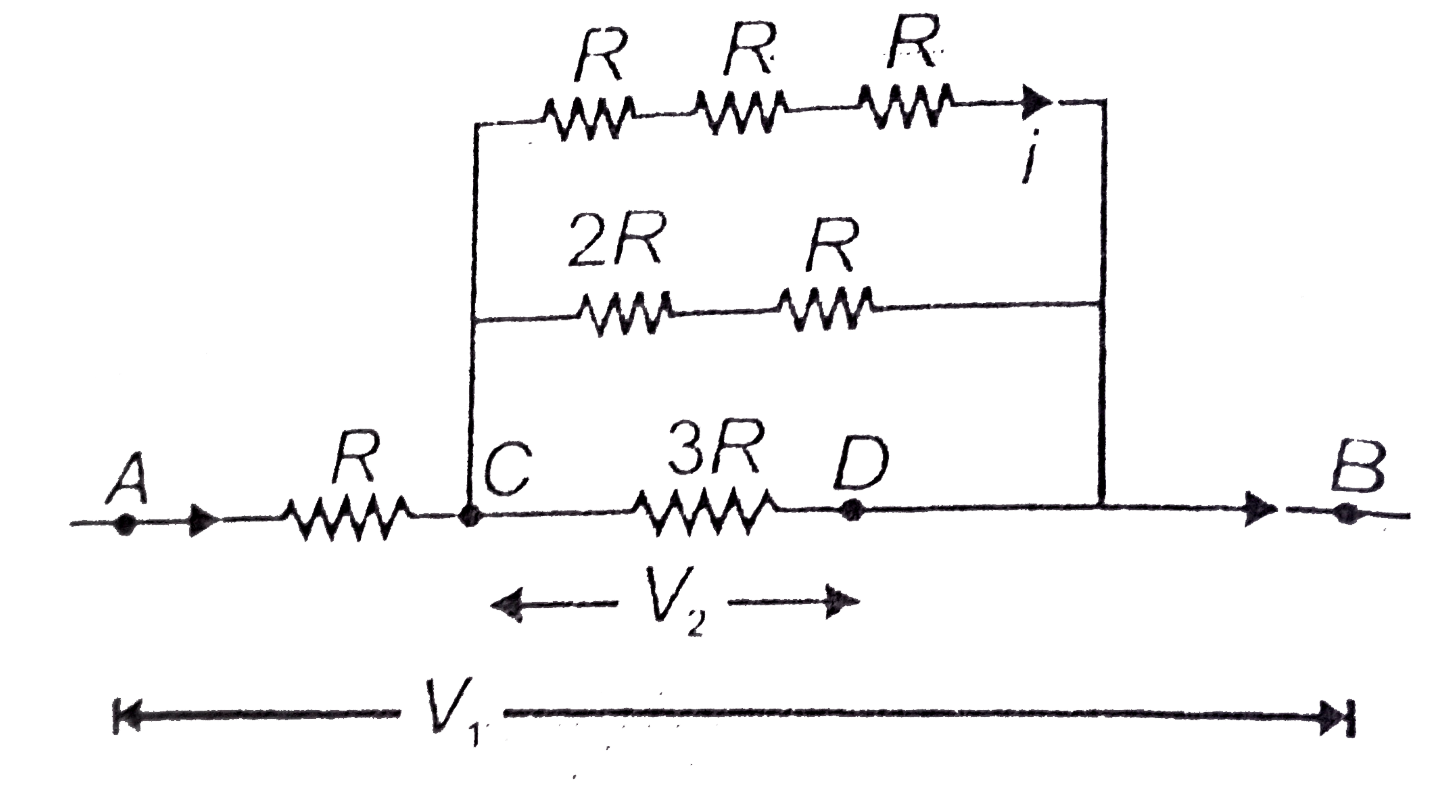
View SolutionVAandVB denot potentils of A and B then the equivalent resistance of A and B, then the equivalent resistance between A and B in the adjoining circuit is (ideal diode)

View SolutionPotential difference between points A and B (i.e. VA−VB) is -----
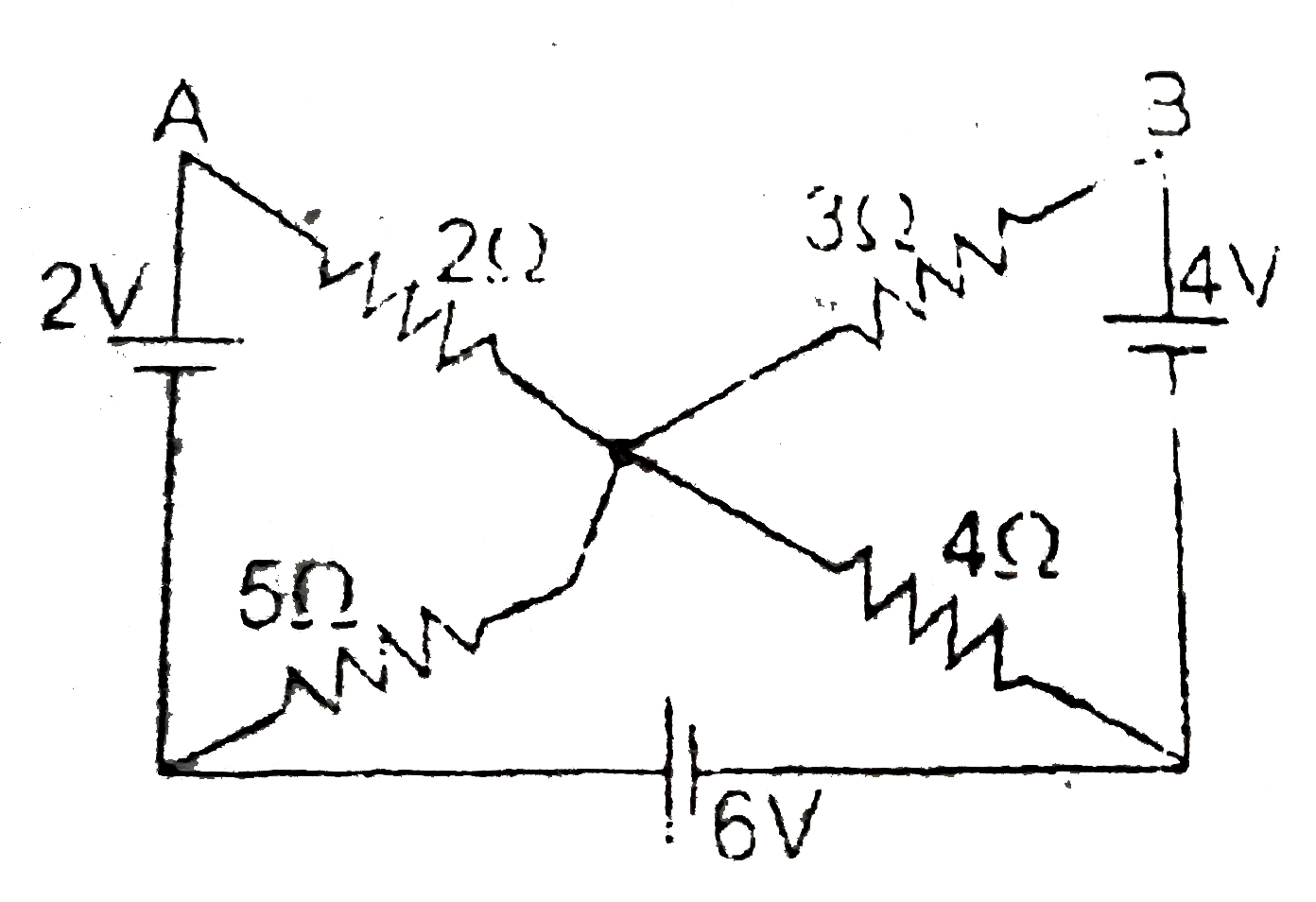
View SolutionIn the circuit shown in figure, E1andE2 are two ideal sources of unknown emfs. Some currents are shown. Potential difference appearing across 6Ω resistance is VA−VB=10V.
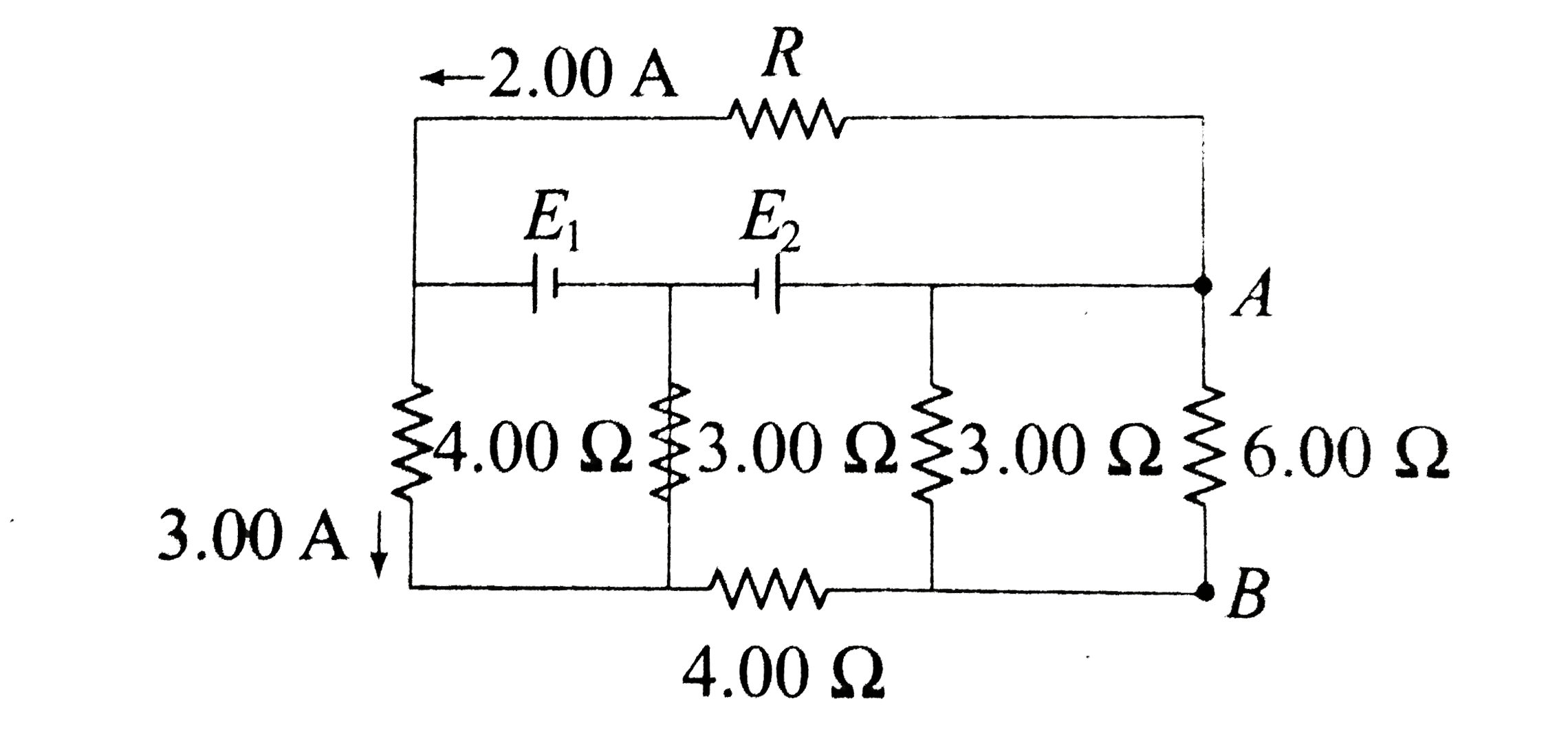
View SolutionTwo condensers C1 and C2 in a circuit are jhioned as shown in . The potential fo point A is V1 and that of B is V2 . The potential of point D will be

View Solution
